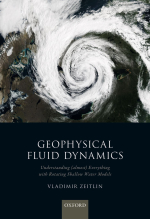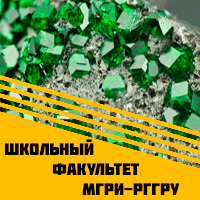Добрый день, Коллеги. Важное сообщение, просьба принять участие. Музей Ферсмана ищет помощь для реставрационных работ в помещении. Подробности по ссылке
Geophysical fluid dynamics. Understanding (almost) everything with rotating shallow water models / Геофизическая гидродинамика. Понимание (почти) всего с помощью вращающихся моделей мелкой воды
The book explains the key notions and fundamental processes of the dynamics of the fluid envelopes of the Earth (transposable to other planets) from the unifying viewpoint of rotating shallow-water model (RSW). The model, in its one- or two-layer versions, plays a distinguished role in geophysical fluid dynamics. It has been used now for about acentury to aid conceptual understanding of various phenomena, for elaboration of approaches and methods to be used later in more complete models, for development and testing of numerical codes and schemes of data assimilations, and for many other purposes. In spite of its simplicity, the model grasps the essential features of the complete ‘primitive equations’ models of large- and medium-scale atmospheric and oceanic motions. Although RSW, most often, can not give a full quantitative explanation of observations, it provides qualitative (and, in many cases, semi-quantitative) understanding. It gives simple and clear representation of the principal dynamical processes and helps to develop physical intuition. In addition, it allows for efficient high-resolution numerical methods which achieve, with modest computational resources, resolutions and time spans hardly possible with the full primitive equations. The quasi-geostrophic reduction of the model is no less celebrated, having been used, for example, for the first successful numerical weather prediction.
After deriving one- and two-layer versions of the RSW model directly from the primitive equations and exploring its properties, we will explain and illustrate the fundamentals of geophysical fluid dynamics with its help, and treat traditional and recently arisen applications. We will be explaining both mathematics and physics underlying dynamical phenomena and the methods used to analyse them, with necessary demonstrations. However, most often we will remain on a heuristic level and will be, frequently in the first place, looking for qualitative insights. Hence, we will illustrate dynamical processes under consideration with abundant figures, and often sacrifice technical details or relegate them to exercises. <...>




